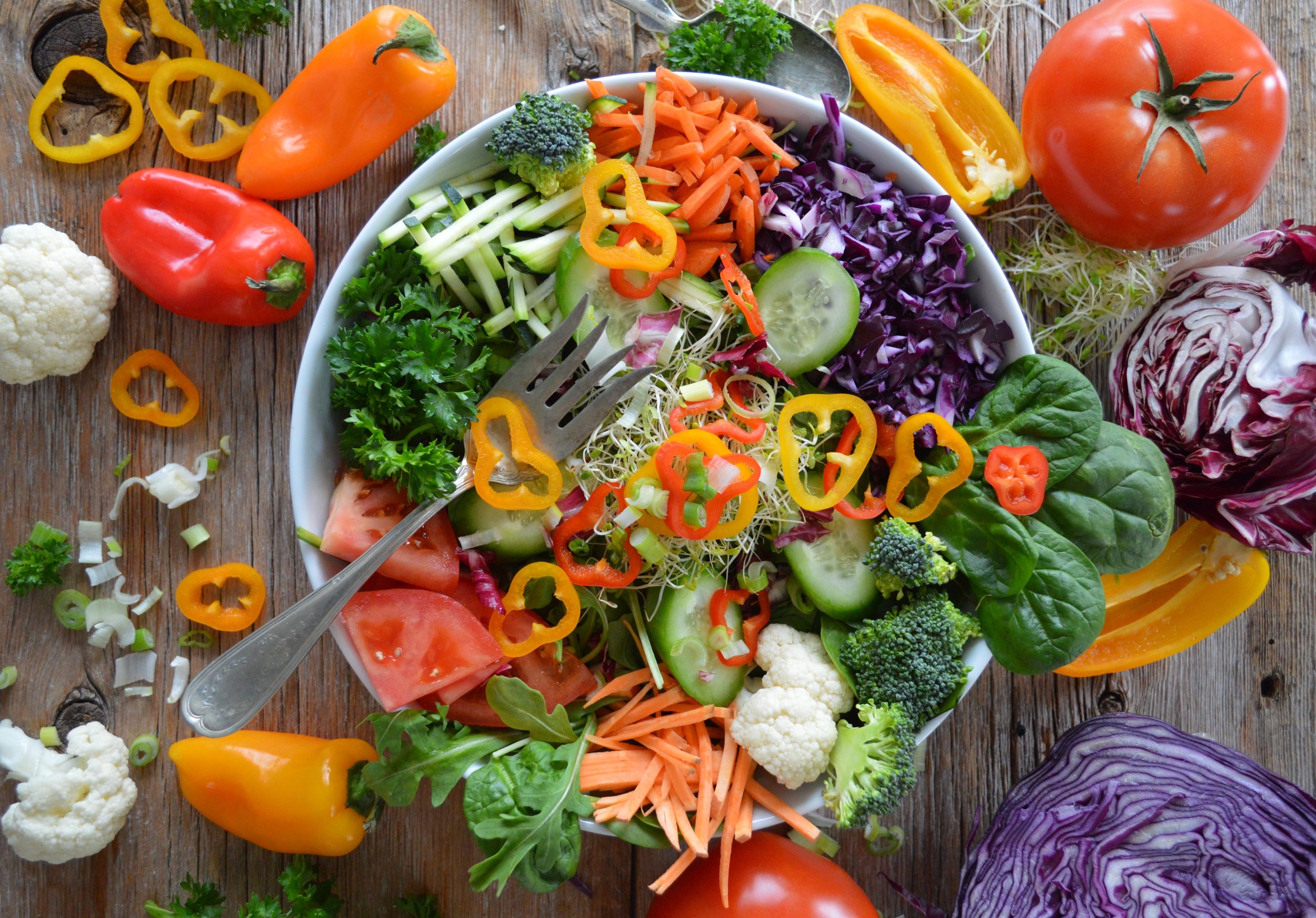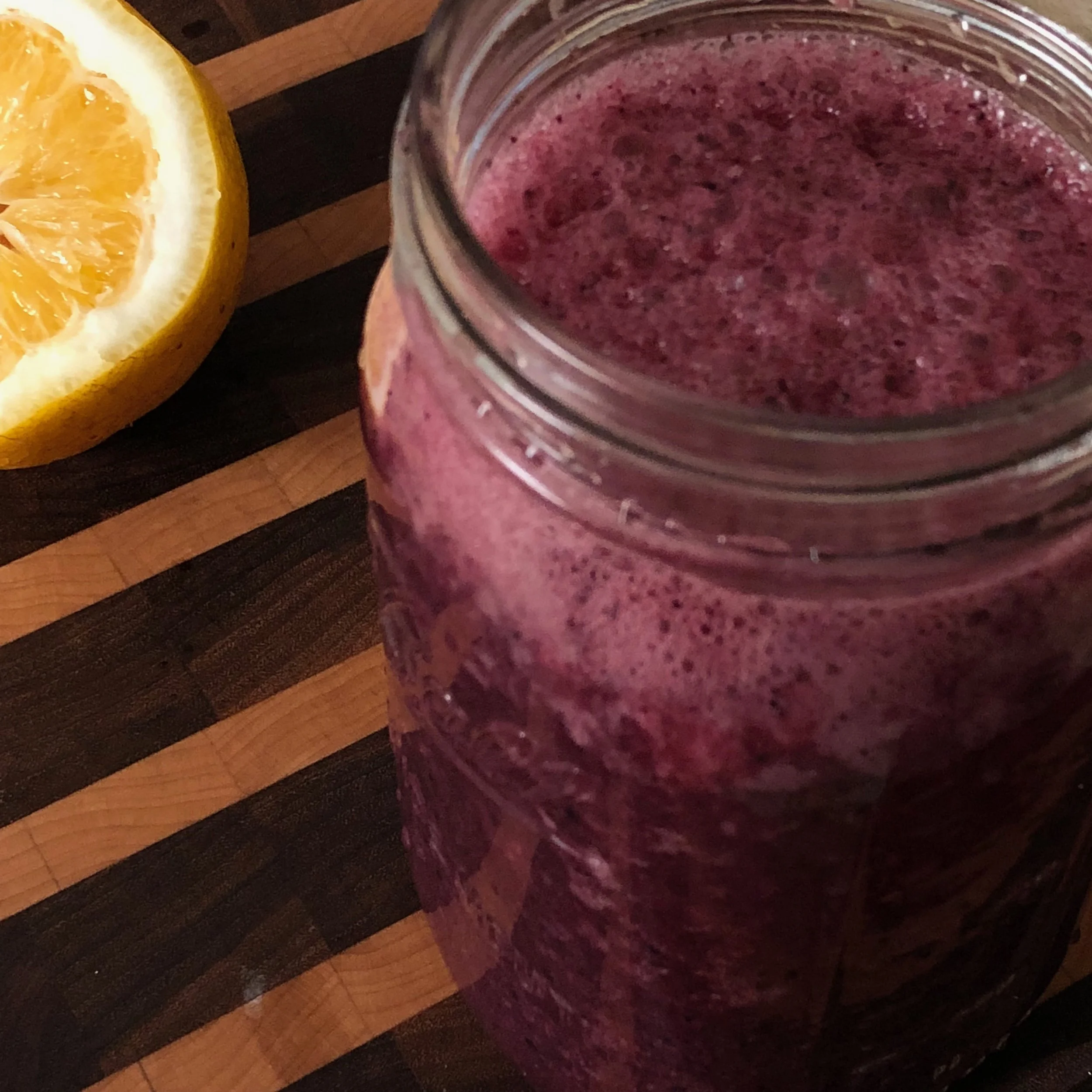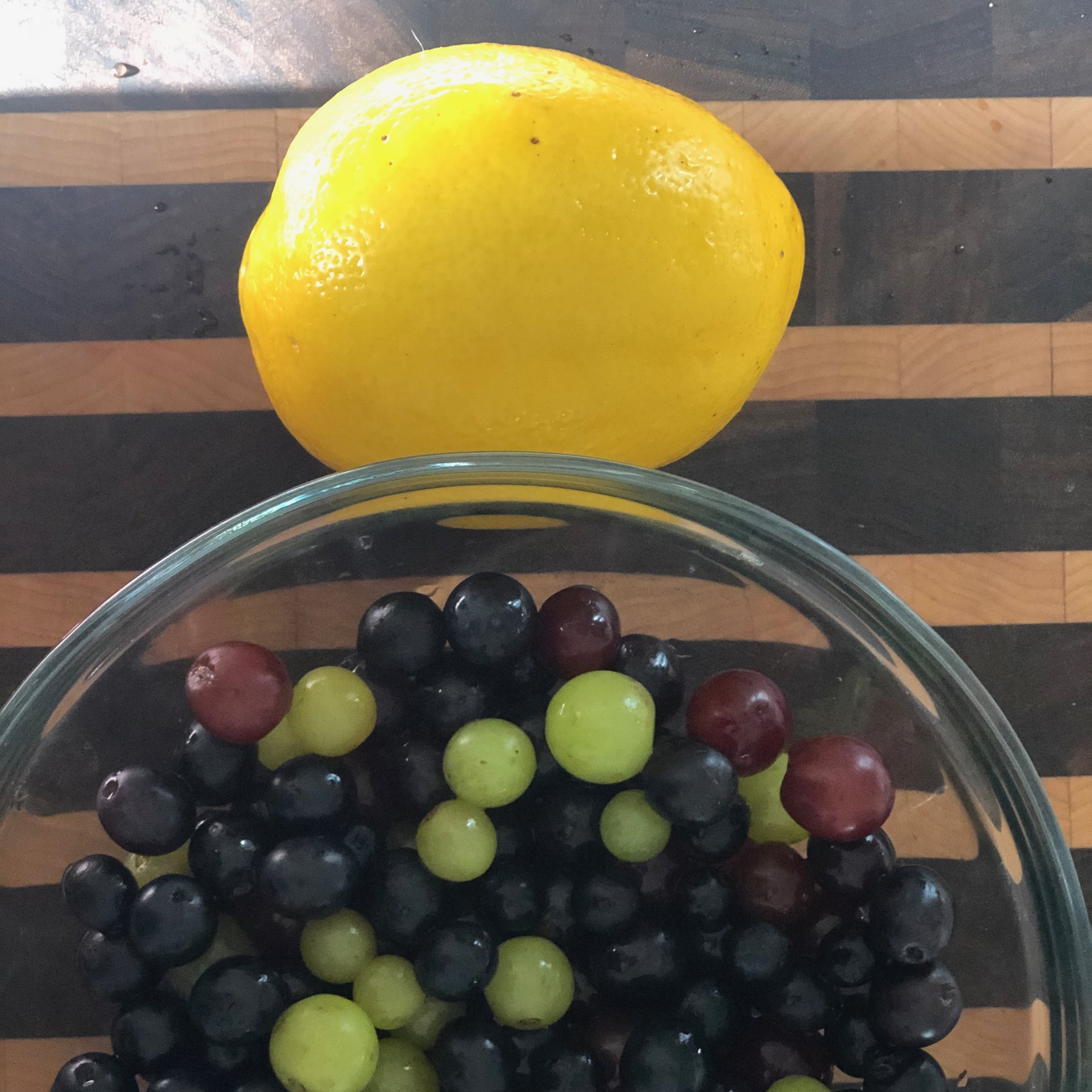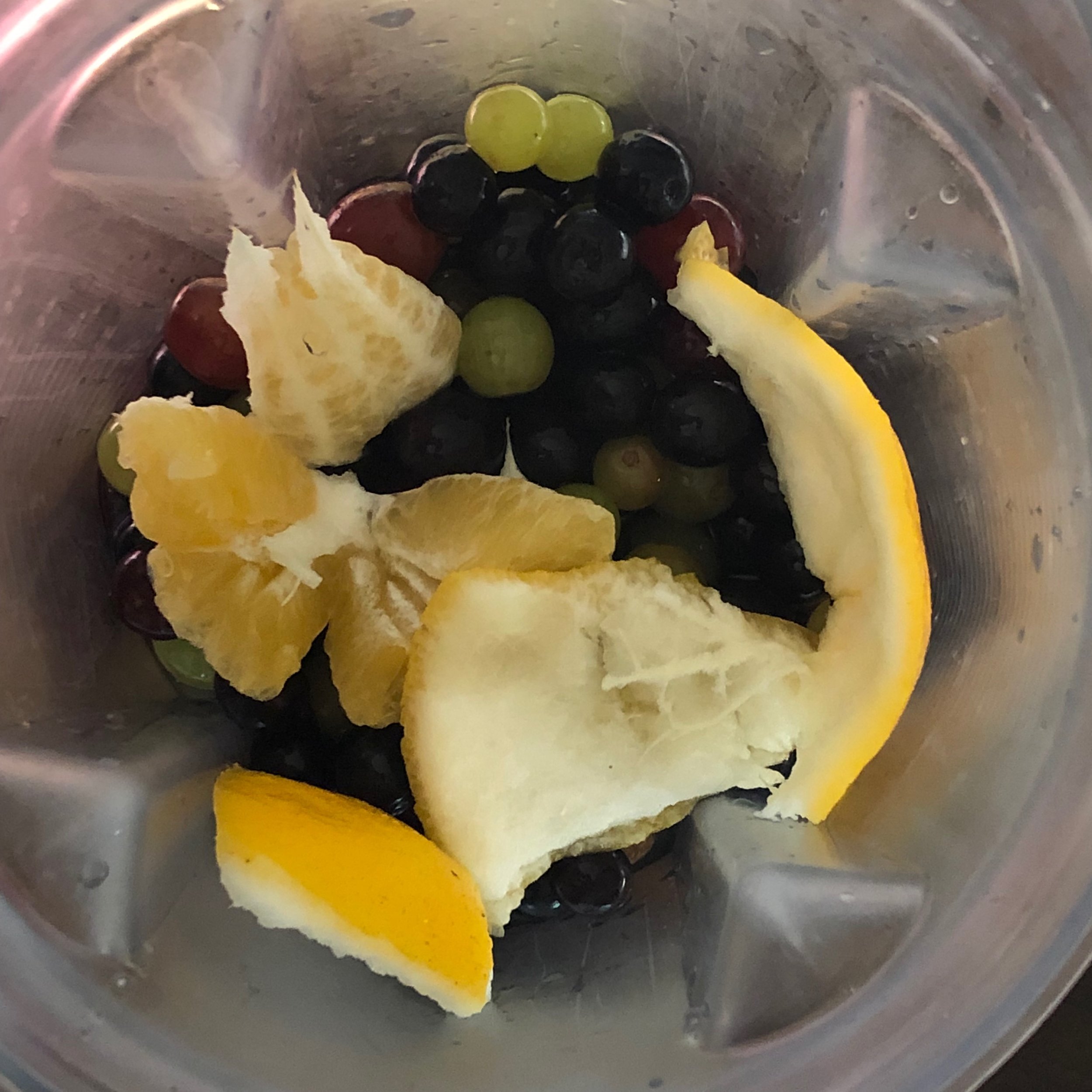Grape juice, when fresh, unsweetened and unfiltered, is incredibly nutritious: it contains high amounts of antioxidant compounds resveratrol and flavonoids, as well as providing dietary fiber via the seeds and the skin. Typically, the darker the grape, the more antioxidants are present. These factors contribute to maintaining healthy blood pressure and reducing LDL (“bad”) cholesterol. Grape juice is also a good source of vitamins B6, C and thiamin, in addition to manganese and potassium.
However, these same benefits are not conferred by store-bought grape juice. The grapes in that juice are mostly pulp, and have been filtered, with skin and seeds removed. Similarly, eating grapes is not the same as crushing them into grape juice. On the other hand, the high-speed blending process of making your own juice pulverizes the skin and crushes the seeds, releasing the flavonoids that are otherwise less likely to get properly metabolized.
The 5 Steps to Making Homemade Grape Juice









